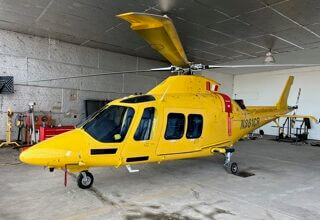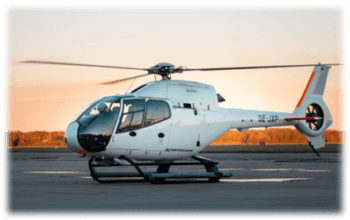Estimated reading time 4 minutes, 21 seconds.
If predicative analytics mature as many predict, the technology could transform the way civilian and military operators manage their fleets, increasing aircraft availability and extending operational life while reducing maintenance costs.
To date, much of the capability of health usage and monitoring systems (HUMS) has been limited to onboard analysis, providing the aircrew with information about aircraft performance while in flight, but only informing maintenance technicians once the aircraft lands.
With its Connected Helicopter technologies, especially with the recent supplemental type certification (STC) of its Aspire 200 satellite communications system on multiple platforms, Honeywell Aerospace is positioned to share that critical health data in real time.
Building on a legacy of HUMS technology, Honeywell launched its latest version of the capability ahead of HAI Heli-Expo 2018 in Las Vegas, Nevada, on Feb. 26. Called RECON, the comprehensive network of sensors will allow maintenance crews to track the health of a rotorcraft from anywhere, gathering information on system alerts and their causes and ensuring the necessary repairs and replacement parts are ready well before a helicopter reaches its destination.
“Using this new system with other connected technologies like Sky Connect and Aspire 200, operators can remain connected wherever they go,” said Ben Driggs, Honeywell’s president of aftermarket sales for the Americas. “This can reduce in-flight cancellations by up to 30 percent, reduce test flights by 20 percent, and cut down on scheduled maintenance by up to 10 percent.”
RECON draws from a network of sensors on rotating parts such as the rotors and drivetrain to collect and analyze performance data and detect potential mechanical issues. Eight times faster than Honeywell’s previous system, RECON enables rapid onboard processing and assessment before data is transmitted via satellite.
“We’ve got it all tied together on the helicopter,” said Mark Goodman, director of cockpit Satcom during a pre-Heli-Expo tour of Honeywell’s Ottawa production facility. “The big advantage over some competing systems is that we do a lot of the processing on the helicopter. We are doing all the real-time monitoring and data analytics [in flight], so we can make conclusions on the helicopter without have to go back to home base, download all the data, put it on to a computer and process it.”
“We are now able to start doing predictive maintenance,” he added. “If something is out of tolerance, a rotor shaft is vibrating more than it should be, that information is sent back [and] the operations centre is now expecting to have to look at that when the helicopter comes back. The next step is to take the data behind that alert, provide real time diagnosis, get the part on order, and reduce the down time of the helicopter.”
In a press release. Honeywell said HUMS had saved $2.1 million in parts cost and operation support and reduced unscheduled maintenance by 75 per cent, according to an eight-year study by the University of South Carolina with the South Carolina Army National Guard.
Honeywell has a 30-year history with HUMS technology in defense and civilian markets, Diggs said in a statement, and has received supplemental type certificates for more than 20 platforms.
“This next generation of HUMS will help operators in industries like oil and gas, emergency medical services, forestry, and defense be connected and ready for takeoff at any moment,” he said.
The next iteration of RECON will likely see an expansion of sensors from engines and rotating parts to landing gear, brakes and other components that might experience higher wear and tear, said Goodman. In addition to having parts such as break pads available for immediate replacement, that data could be provided to an airline operator, for example, to analyze why pilots are “chewing through brakes,” he noted. “Maybe there is an operational procedure you can modify to extend your pad life and save money.”
Since the Honeywell HUMS product line relies on a common hardware and software environment, users of the previous generation can easily upgrade to the RECON system, the company said.








